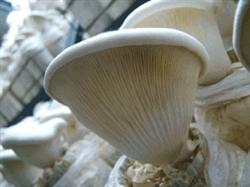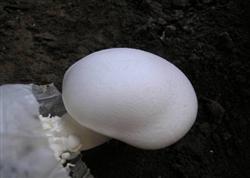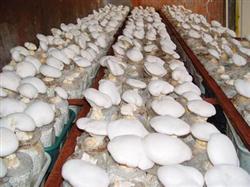Artificial regulation of Pleurotus ostreatus can produce high yield.

The main results are as follows: 1. Pleurotus ostreatus is a medium-low temperature variety, which is very sensitive to temperature. its hyphae can adapt to a wide range of temperature and can survive at the temperature of 4 ℃ ~ 37 ℃, but the suitable temperature for its growth period is 23 ℃ ~ 28 ℃, the post-ripening temperature of mycelium is 5 ℃ ~ 30 ℃, and the temperature range of mushroom emergence is. 0 ℃ ~ 25 ℃, but the suitable temperature of mushroom bud stage is 8 ℃ ~ 13 ℃ in the early growth stage and 15 ℃ in the later stage. It is not difficult to see that the temperature for the growth of Pleurotus ostreatus fruiting body is low at first and then high. Second, another characteristic of Pleurotus ostreatus is that it takes quite a long post-ripening stage for mycelium growth to reach physiological maturity, that is, after the mycelium is full, Pleurotus ostreatus bags can not produce mushrooms directly like Pleurotus ostreatus, but must go through a post-ripening stage of mycelium to produce mushrooms. According to the different characteristics of strains, this stage generally takes about 60 days, and some strains even as high as 80 days, which is extremely inconvenient in production arrangement, which greatly prolongs the production cycle and relatively reduces the efficiency of production and management. The core of artificial regulation and control of short-breeding, high-quality and high-yield technology of Pleurotus ostreatus is to shorten the post-ripening period of Pleurotus ostreatus and produce mushrooms smoothly by artificially regulating the temperature condition of the post-ripening stage of Pleurotus ostreatus hyphae. The basic methods are as follows: first, the temperature of the post-ripening stage of mycelium is adjusted to 30 ℃ for about 10 days, so that the hyphae fully develop, and then the temperature is lowered to maintain for about 15 days at the temperature of 0 ℃ ~ 10 ℃, so that the hyphae form self-protection under relatively uncomfortable conditions, so as to accelerate the process of its development. General strains can be successfully transferred to reproductive growth after a temperature control cycle, while individual strains need two temperature control cycles to transfer to reproductive growth. Third, when the bacterial bag has a whiter color, makes a sound like tapping hollow wood, and has high hardness and strong elasticity, it can be removed from the cold storage and into the plastic greenhouse. At this time, we should try to increase the temperature of the shed, increase the humidity, give an appropriate amount of strong light stimulation and greater ventilation. After moving into the plastic greenhouse for about 7 days, the yellowish bacterial liquid appeared at the inoculation block. After that, the temperature should be lowered as much as possible, waiting for it to bud. In general, the greenhouse temperature should be kept below 15 ℃, cover the grass grass, strengthen the ventilation in the morning and evening, and strengthen the ground watering and space spraying at the same time. Mushroom buds can be formed quickly in a few days at a low temperature below 15 ℃. 4. Generally speaking, each mushroom noodle can produce 1-3 mushroom buds, and only one mushroom bud can be kept before the differentiation is completed.
- Prev

New techniques for cultivation and Management of Pleurotus ostreatus
Pleurotus ostreatus, because of its unique edible and medicinal value, the amount of materials used in northern China has increased year by year in recent years, and there has been a prosperous prospect of production and market. it is one of the preferred mushrooms for novice mushrooms to develop edible mushroom production. Mushroom type is poor, to this, we combine here the introduction of key point of production technology.
- Next

Culture tube technology of Pleurotus ostreatus
Pleurotus nebrodensis is extremely sensitive to temperature, and its hyphae can adapt to a wide range of temperature, and can survive under the condition of 4 ℃ 37 ℃. The suitable temperature range for mushroom emergence is 23 ℃, and the temperature range for mushroom emergence is 0 ℃. The best temperature range is 813 ℃ in the early growth stage and 15 ℃ in the later stage. The mycelial growth of Pleurotus ostreatus needs phase.
Related
- Fuxing push coffee new agricultural production and marketing class: lack of small-scale processing plants
- Jujube rice field leisure farm deep ploughing Yilan for five years to create a space for organic food and play
- Nongyu Farm-A trial of organic papaya for brave women with advanced technology
- Four points for attention in the prevention and control of diseases and insect pests of edible fungi
- How to add nutrient solution to Edible Fungi
- Is there any good way to control edible fungus mites?
- Open Inoculation Technology of Edible Fungi
- Is there any clever way to use fertilizer for edible fungus in winter?
- What agents are used to kill the pathogens of edible fungi in the mushroom shed?
- Rapid drying of Edible Fungi

